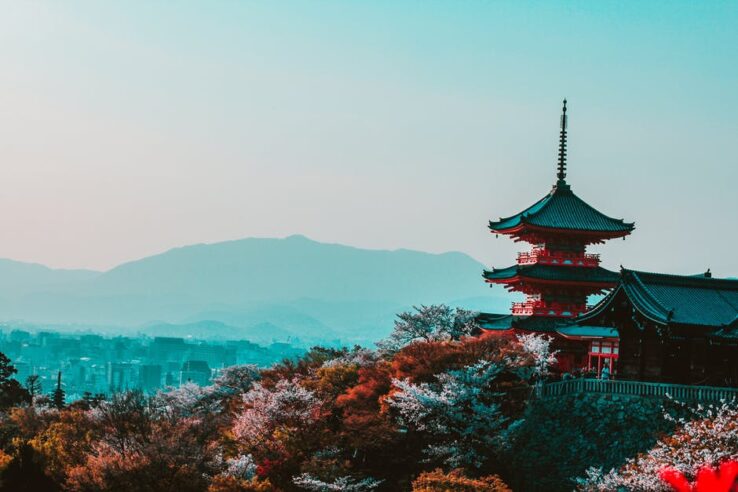Sake vs. Shochu: Comparing Japan’s Iconic Alcoholic Beverages
A fascinating shift in Japan’s age-old drinking tradition has recently caught the world’s attention. For over a thousand years, sake has been the go-to spirit, deeply intertwined with Japanese culture.
However, the country’s drinking habits highlight an unexpected turn of events. Shochu, Japan’s other national drink, has overtaken sake in local consumption. Not only is being a sake specialist an option but you can also become a shochu sommelier.
This surprising revelation leads us to an intriguing question: what makes shochu more prevalent than its venerable counterpart? What are the differences that set sake and shochu apart? Delve into this article and uncover the intricacies that make these Japanese drinks unique and beloved, both at home and abroad.
A Tale of Two Spirits: Sake and Shochu
Unveiling the charm of Japan’s alcohol scene involves unraveling the histories of sake and shochu. Revered for over a thousand years, sake is a symbol of Japan’s age-old traditions. This rice-based drink, also called “nihonshu,” is deeply rooted in religious and cultural practices.
Shochu is a relative newcomer in historical terms but it has swiftly secured its place as a favored spirit in Japan. Shochu originates from Kyushu island and comes from diverse sources such as barley, rice, sweet potatoes, and even brown sugar.
The Birth of a Bottle: Production Process
The fundamental difference between sake and shochu lies in their production processes. Sake is brewed in a process similar to beer. Rice starch is converted into sugars and then fermented into alcohol.
On the other hand, shochu is distilled, much like whiskey. The starches, from whichever base is used, are converted to sugars, fermented, and then distilled.
Varieties and Types
The world of Japanese drinks offers a spectrum of flavors and types. Sake varieties are defined by their rice polishing ratio and whether additional alcohol is added. For instance, junmai sake has no added alcohol, while ginjo and daiginjo have high rice polishing ratios and delicate flavors.
Shochu also comes in multiple varieties. These include barley (mugi), sweet potato (imo), and rice (kome) and each present unique taste profiles.
Taste Profile
Appreciating sake vs shochu involves understanding their distinct taste profiles. Sake typically offers a delicate balance of sweetness, bitterness, and umami, with fruity and floral notes.
Shochu, being a distilled spirit, has a higher alcohol content and a bolder flavor. The taste can range from light and fruity to rich and smoky, depending on the base ingredient.
Just as the selection of the right dish can enhance your dining experience, the right alcohol distribution is essential to fully savor these Japanese drinks.
Serving it Right: Serving Suggestions
When it comes to serving Japanese alcohol, the details matter. Let’s explore how sake and shochu are traditionally enjoyed.
Sake can be served either cold or warm, depending on the type. High-quality sake is usually served chilled to appreciate the nuanced flavors. Warm sake brings a comforting touch, especially during colder months.
The vessel for serving sake is usually a ceramic flask called a tokkuri. This also plays a crucial role in the experience.
In contrast, shochu is versatile and can be served in several ways. It can be sipped straight, on the rocks, or mixed with water (known as mizuwari). It’s also popularly enjoyed in a cocktail called chuhai, mixed with soda and a splash of fruit juice.
Alcohol distribution is an essential aspect of any social gathering. Selecting the right drink to suit the mood, the meal, or the occasion can make a world of difference.
Beyond the Buzz: Health Benefits and Alcohol Content
Delving deeper into the sake vs shochu debate, it’s worth considering their health aspects and alcohol content.
Sake is lower in alcohol than most distilled spirits. It has an alcohol content generally ranging from 15-20%. Sake’s known for its amino acids, which promote skin health, and its lack of sulfites, which can trigger allergies in some people.
Shochu, a distilled spirit, has a higher alcohol content, typically around 25%. It’s often lauded for being low in calories and sugar. This makes it a popular choice for health-conscious drinkers.
Raising the Bar: Education and Training Opportunities
Knowledge of Japanese alcohol extends beyond mere appreciation. Whether you’re an enthusiast wanting to learn more or a professional aiming to expand your skills, educational opportunities can deepen your understanding of these unique beverages.
Shochu Adviser Course
If shochu captivates your interest, you may want to become a Certified Shochu Adviser. This course is centered around Japan’s popular distilled alcohol. provides insight into its history, ingredients, and production methods. As a student, you’ll taste premium shochu made from various sources like:
- Sweet potato
- Barley
- Rice
- Buckwheat
- Sugarcane
This interactive class features shochu tasting and discussions. It gives you first-hand experience with different varieties. This course is a perfect step if you’re preparing for a career in the restaurant, beverage, or food industry.
Sake Specialist Course
For those drawn to the ancient art of sake brewing, becoming a Certified Sake Adviser could be an ideal move. It’s open to professionals in the hospitality industry and serious sake enthusiasts. The Certified Sake Adviser course gives you a hands-on experience of:
- Sake’s history
- Key ingredients
- Tasting techniques
- Classification
The training includes tasting and analyzing over a dozen sake varieties and offers a practical introduction to different sake types. By the end of the course, you’ll be a certified sake specialist.
Sake Sommelier
Once you’ve obtained the Certified Sake Adviser qualification, you’re eligible for the advanced Certified Sake Sommelier course. This intensive 3-day program equips you to speak about sake independently and confidently. By the end of the course, you’ll know the principal categories of sake, their defining characteristics, and the key principles involved in the storage and service of sake.
Enhance Your Japanese Beverage Experience
Understanding the differences between sake and shochu enriches your appreciation of Japan’s alcohol culture. The knowledge you’ll gain as a shochu adviser or sake specialist can empower you to enhance the drinking experience for your customers or friends.
At Sake School of America, we offer comprehensive courses to deepen your understanding even further. Contact us today to embark on your journey as a sake specialist or shochu connoisseur.


